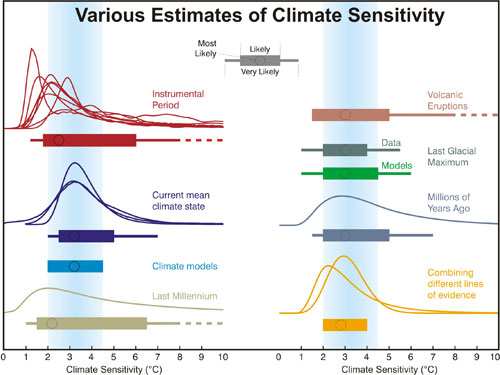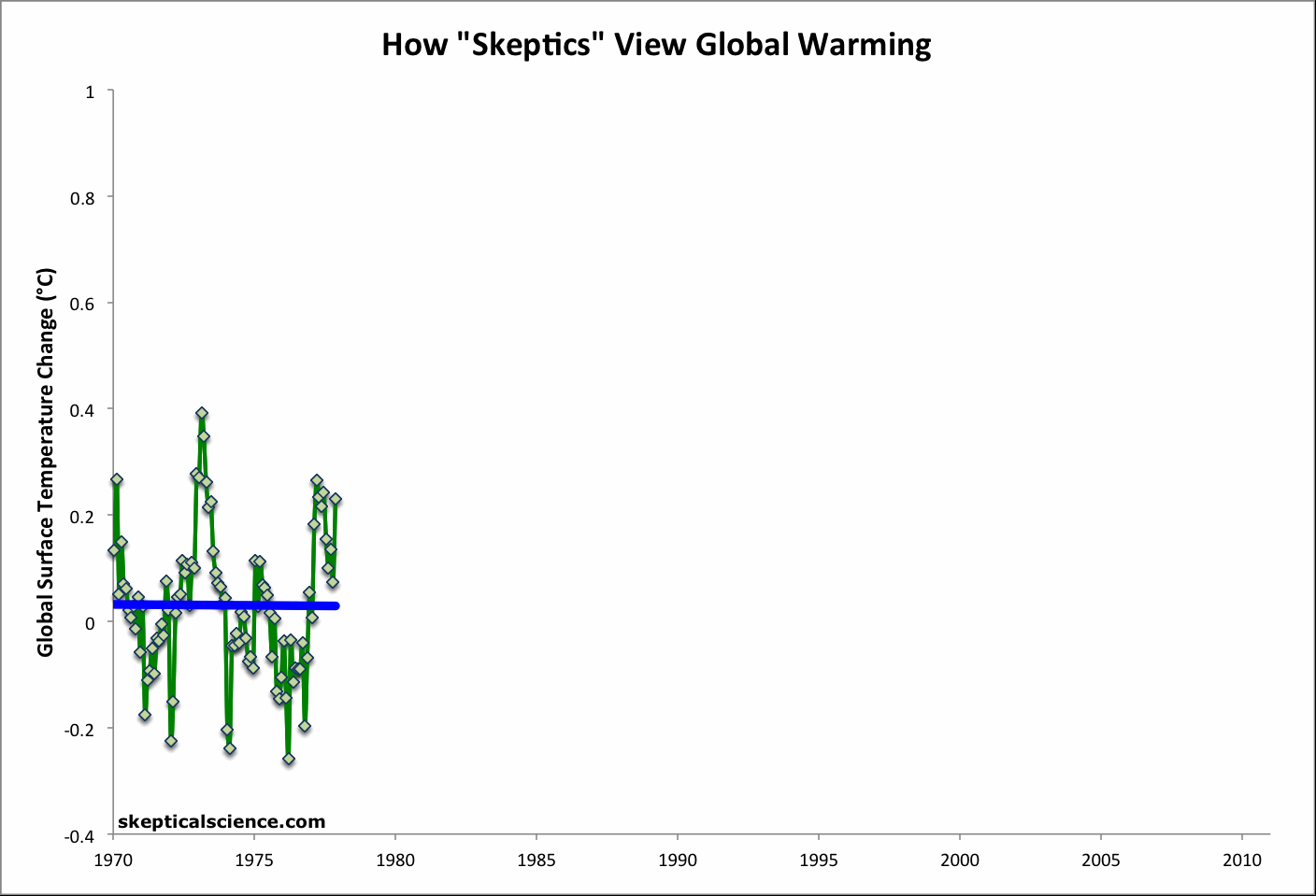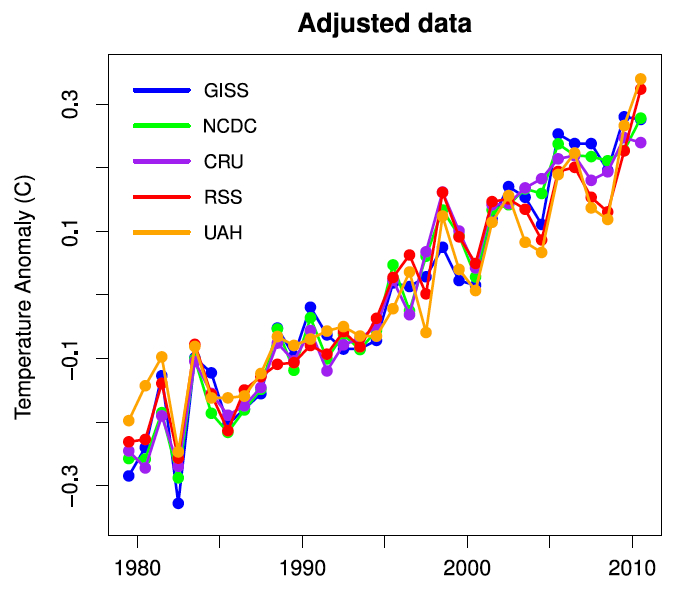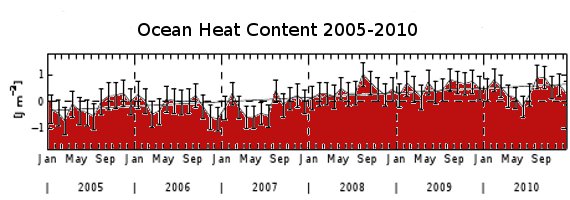Michaels Misrepresents Nordhaus and Scientific Evidence in General
Posted on 9 February 2012 by Alex C
The Wall Street Journal’s 27 January 2012 climate change op-ed came under harsh and swift criticism for being signed by only two climate scientists and fourteen other non-climate scientists, criticism most notably demonstrated by a group of 38 climate scientists in a response letter that the Journal has agreed to publish (to its credit). Apparently this strong show from experts in the field has not stopped Dr. Patrick Michaels, though, from nailing his colors to the mast at Forbes, and both promoting misrepresentation of the research of another scientist - Professor William Nordhaus - and misinforming the public on the consensus of evidence in climate science.
Michaels continuing the misrepresentation of Dr. William Nordhaus
Michaels starts his opinion piece by first contradicting another op-ed that appeared in the New York Times, written by Andrew Revkin. In his piece, Revkin cites an email exchange that he had with Sterling Professor of Economics at Yale University, Dr. William Nordhaus. For some quick background info, the Wall Street Journal op-ed stated:
A recent study of a wide variety of policy options by Yale economist William Nordhaus showed that nearly the highest benefit-to-cost ratio is achieved for a policy that allows 50 more years of economic growth unimpeded by greenhouse gas controls.
Nordhaus said in his exchange with Revkin,
The piece completely misrepresented my work. My work has long taken the view that policies to slow global warming would have net economic benefits, in the trillions of dollars of present value. […] I have advocated a carbon tax for many years as the best way to attack the issue.
Now one would think that a researcher would be aware of what his own research says. Michaels does not think so though, and goes on to explain how the WSJ op-ed authors know more about Nordhaus’ work than the man himself does, as is allegedly demonstrated in Nordhaus' book, A Question of Balance: Weighing the Options on Global Warming Policies. In his book, Nordhaus details the 2007 results of the DICE (Dynamic Integrated model of the Climate and Economy) model, which is an economic model that compares the costs of climate damages and mitigation policies, from the perspective of economic growth theory. He summarizes this in his first chapter:
In this approach, economies make investments in capital, education, and technologies, thereby abstaining from consumption today, in order to increase consumption in the future. The DICE model extends this approach by including the “natural capital” of the climate system as an additional kind of capital stock. By devoting output to investments in natural capital through emissions reductions, reducing consumption today, economies prevent economically harmful climate change and thereby increase consumption possibilities in the future. (p. 7)
The model ran a baseline scenario in which no action is taken, and projected present-value costs of such a course of (in)action. Nordhaus then had it run several more simulations, which are based around various climate policies that economies could work to implement.
Michaels cites the 16 signatories (who had responded to this accusation of misrepresentation themselves), who in turn cited Table 5.3 in Nordhaus’ book (p. 89), which gives the foregone costs from each policy (relative to the baseline scenario) and implementation costs, and a ratio between the two. In order, the policies with the highest benefits/costs ratios are:
| Rank | Climate policy option |
Ratio of Benefits |
| 1 | Kyoto without USA | 6.00 |
| 2 | Limit to 2.5*pre-industrial CO2 (700 ppm) | 2.43 |
| 3 | "Optimal" (most efficient, optimistic) | 2.42 |
| 4 | 50-year wait | 2.38 |
The ratio is about 2% less than a general proposed carbon reduction plan (2.5xCO2), so there's not much of a difference between 50-year wait and carbon pricing policies (aside from the Kyoto agreement w/o USA involvement - this will be covered below, but Nordhaus starts to express his own conclusions of the Kyoto agreement likely being inefficient on page 17). It is not this ratio, however, that is the most important bit of data concerning this issue. The ratios are very similar, but what about the money actually saved? I could spend $1 to save $3 down the road, but I would much rather spend $10 to save $30. Indeed, Nordhaus had actually commented on this important aspect of climate policy in the first chapter of his book:
The results of this book emphatically point to the importance of designing cost-effective policies and avoiding inefficient policies. The term “cost-effective” denotes an approach that achieves a given objective at minimum cost. (p. 17)
Nordhaus also, earlier, gives a sneak peak at the quantitative results of the model runs:
The efficient climate-change policy would be relatively inexpensive and would have a substantial impact on long-run climate change. The net present-value global benefit of the optimal policy is $3 trillion relative to no controls. This total involves $2 trillion of abatement costs and $5 trillion of reduced climatic damages. Note that even after the optimal policy has been taken, there will still be substantial residual damages from climate change, which we estimate to be $17 trillion.
[...]
We found that for most of the climatic-limits cases, the net value of the policy is close to that of the optimal case. (p. 15)
So, how much do the benefits actually outweigh the costs? Here is that list, derived from numbers in Figure 5.3, but also observable in terms of total cost of each plan in Table 5.1 (p. 83):
| Rank | Climate policy option | Savings = Benefits - Costs [Trillions USD (2005)] |
| 1 | Limit to 2.5*pre-industrial CO2 (700 ppm) | 3.08 |
| 2 | "Optimal" | 3.07 |
| 3 | Limit to 3?C | 3.02 |
| 4 | Limit to 2.0*pre-industrial CO2 (560 ppm) | 2.67 |
| 5 | 50-year wait | 2.14 |
| ... | ... | ... |
| 10 | Kyoto without USA | 0.10 |
Not only did the 50-year wait option fall short of a given carbon pricing plan ratio-wise when it came to benefits v. costs, it falls in fifth place amongst the list of policy options in net savings, almost a full trillion dollars less in savings.
Nordhaus himself states in his book "[o]ur modeling results point to the importance of near-universal participation in programs to reduce greenhouse gases," (p. 19). While not being wrong about their statements about the near-ideal ratio of benefits-to-costs of a 50-year wait policy, the 16 signatories were very wrong about their interpretation and presentation of Nordhaus' results, even though the results were explicitly stated in the book. That is careless. That they would maintain that they correctly represented Nordhaus’ own conclusions, even after he himself insisted they did not, is entirely unacceptable in a meaningful scientific debate; and Michaels should should not have so willingly supported these claims without first double-checking their validity.
When in doubt, turn to experts
In addition to misreporting Nordhaus’ research, Michaels decided to attempt to address points brought up in Trenberth et al’s 38-signatory response letter. Dr. Trenberth analogized the commentary of the non-climate scientists in the WSJ op-ed on climate science issues to your dentist attempting to diagnose your heart condition. While both fields fall under the biomedical field of studies, neither is a specialist in the others’ field. This point is lost on Michaels though, who thinks that climate science can be generalized as “nothing more than applied physics.” While this denigration of the field only helps to elaborate on Trenberth’s analogy (cardiology and dentistry are, after all, both fields of medical study!), readers would be wary to not fall for this red herring. When faced with an issue, we consult experts in the relevant field; and when non-experts publish claims that greatly diverge from the consensus of evidence and experts in the field, we face those claims with high skepticism.
Climate sensitivity misinformation
Michaels goes on to defend Dr. Richard Lindzen’s views on low climate sensitivity from Trenberth’s likening to extreme views in other fields, such as the idea that AIDS is not caused by HIV or that smoking does not cause cancer (analogies which Michaels thinks make Trenberth as a dentist commenting on cardiology… even though the contrary to those views indeed are the positions of the experts in those fields). Climate sensitivity is the climate's temperature response to a given radiative forcing (?C/W/m^2), and is typically expressed as the temperature response relative to the forcing from a doubling of CO2 (2xCO2). Lindzen has consistently promoted a low climate sensitviity, as low as <1?C/2xCO2. However, contrary to Michaels' assertion, the consensus of evidence does not support a low sensitivity, but instead the IPCC’s mean estimate of 3?C/2xCO2.

Figure 1: Distributions and ranges for climate sensitivity from different lines of evidence. The circle indicates the most likely value. The thin colored bars indicate very likely value (more than 90% probability). The thicker colored bars indicate likely values (more than 66% probability). Dashed lines indicate no robust constraint on an upper bound. The IPCC likely range (2 to 4.5°C) is indicated by the vertical blue shaded regions. Adapted from Knutti and Hegerl (2008).
We have additionally covered at SkS, on multiple occasions (such as here, here, and here), why Lindzen’s views on climate sensitivity are appropriately labeled “extreme.”
The Earth is still heating up
Michaels spreads further misinformation in his response to Trenberth’s claim that warming has not abated in the past decade (as was claimed in the original WSJ op-ed). Both Michaels and the 16 WSJ signatories make the mistake that many “skeptics” do, which is to focus on short term time spans and ignore the underlying trend: trying to walk down an up escalator.

Figure 2: Still Going Down the Up Escalator (NOAA NCDC Land-Ocean Data)
There are further problems with Michaels’ article on this issue, though.
Adding trends to data helps us see the trends
For starters, we actually do have surface temperature records, not just satellite data from which surface temperatures can be estimated. NASA’s GISTEMP is perhaps the most comprehensive of the surface records, as it includes regions excluded by others (such as the polar Arctic, which is left out in HadCRUT3 for instance; the polar Arctic is also not included in the satellite data), and using the time interval Michaels chose, since 1997 we have seen warming of ~0.16?C. That’s simply not zero. Even when we apply a trend to the UAH satellite data over the 1997-present time period, which Michaels for some reason did not do, we see that the lower troposphere has warmed by about 0.145?C, again not zero.
Accounting for variation
Furthermore, both the surface and troposphere temperature estimates are subject to the effects of exogenous factors – such as ENSO, or the solar cycle – that do not have a long term contribution to the temperature trend but which can affect short term data analysis (this is why it is generally not a good idea to pick small time frames when looking for trends). When these exogenous factors are accounted for, as Foster and Rahmstorf 2011 did, we see a continuation of the warming trend from the past several decades.

Figure 3: Foster and Rahmstorf (2011) - Figure 5 in-paper
Heat accumulating elsewhere, too
Of course, the planet is not only defined by the atmosphere. Energy has not only been accumulating in the atmosphere, but also in other heat sinks as well, namely the ocean. In fact, Trenberth et al note as much in their letter:
And computer models have recently shown that during periods when there is a smaller increase of surface temperatures, warming is occurring elsewhere in the climate system, typically in the deep ocean.
This aspect of the climatic system, however, goes unmentioned in Michaels’ article. We indeed have confirmation of such heat accumulation, especially of accumulation in the very deep ocean (1500 meters) as shown by von Schuckmann and Le Traon 2011.

Figure 4: von Schuckmann and Le Traon (2011) - Figure 5 (middle) in-paper
What we see in the spread of evidence is that the Earth continues to warm up, and that claims that the Earth has stopped warming since “year X” are without foundation.
The importance of addressing misinformation
The public deserves to be well informed of the accepted science in any field. Climate scientists like Trenberth et al perform a service to the public (not to mention the credibility of their own profession) by addressing misinformation as promulgated in the WSJ op-ed, and by standing up for the consensus of evidence. The consensus of evidence tells us that global warming is happening, that it is now almost entirely human-driven and that it will cost us down the road unless we start to take action now to address it. Just like we need our cardiologists to tell us when our heart is at risk, we need our climate scientists to step up and speak out. It is telling how Michaels feels about such confrontation from his concluding statement:
All of which goes to show that when climate scientists engage each other, the waste heat probably does contribute to an increment of global warming.
It’s not quite often that we hear from “skeptics” that climate scientists shouldn’t engage each other, or other people (it's shocking to think that such a statement came from a climate scientist in the first place). However, as long as “skeptics” continue to spread misinformation, especially when they are not experts in the field, that is exactly what they should expect and be prepared for. And as long as Dr. Michaels chooses to continue misinforming others himself - and more reprehensibly, to continue to misrepresent the research of other scientists - he too should expect to be called out by people paying attention.































 Arguments
Arguments






























[dana1981] It's probably an issue of copying from a Word document or something. If you just type the post straight into the SkS blog post box, the default font size is what we normally use.
At what degree does the Arctic lose it's ice during the summer months?
Because I can assure you that once that happens, there will be no stopping Global Warming.
Does it happen at 2°C or less?
Think you can stop the Arctic from melting?
I don't and neither do many US oceanographers.
https://www.theguardian.com/environment/2015/jul/16/warming-of-oceans-due-to-climate-change-is-unstoppable-say-us-scientists
There is a severe flaw in the logic here.
Care to explain it?
[PS] Fixed link. Please learn how to do this yourself with the link button in the comments editor.
Fortunately, scientists have looked into the effects of an ice-free Arctic.
Pistone et al 2019 - Radiative Heating of an Ice‐free Arctic Ocean
Takeaways:
Money section: